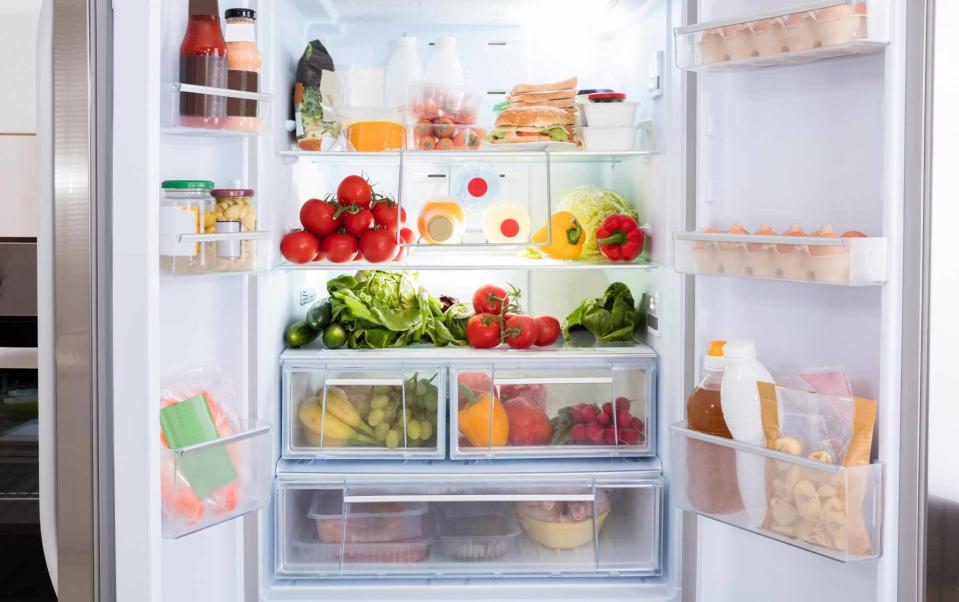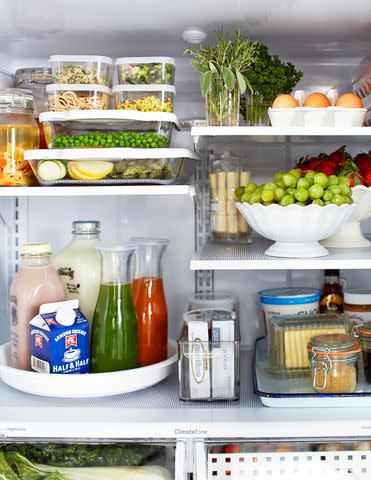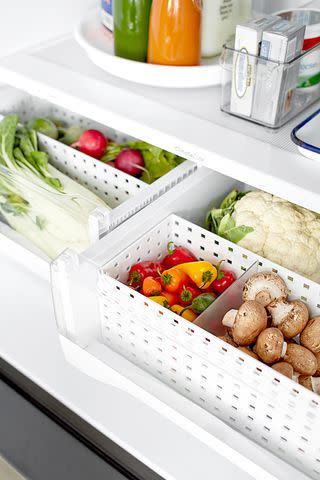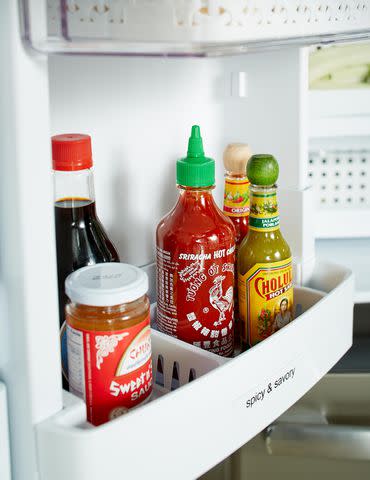Refrigerator Organization Ideas for Better Function and Storage
Take one day to organize your fridge using these genius hacks and save yourself time (and stress).

The refrigerator is the most popular home appliance, and between whipping up a quick breakfast on your way out the door and hitting the kitchen for a late-night snack, you're in and out of it several times a day. Refrigerator organization ideas can keep the inside of your fridge from quickly becoming a mess. Luckily, learning how to organize your fridge can be a simple process.
Just an hour or two of sorting a refrigerator's contents can help guard against food waste and unpleasant smells while making meal prep much more efficient. Take your kitchen organization to a new level with these refrigerator organization ideas.
Related: How to Organize a Kitchen Pantry

Start by Choosing a Section
Implementing refrigerator organization ideas can be overwhelming, but it doesn't have to be. Start small and tackle one section at a time. Clear all items and store them temporarily in a cooler. Check the expiration date on each item and dispose of anything that has expired. To save space when you restock, remove products from their packaging when possible, then mark the expiration date on containers storing individual items using a permanent marker. Once the fridge section is empty, wipe down all surfaces with a damp cloth. Add a DIY refrigerator deodorizer, such as a jar of baking soda or coffee, to eliminate foul fridge smells.
And don't forget that your refrigerator shelves are adjustable! Switch up the shelf heights as needed to accommodate different-sized items. You might be surprised at how much new space you can create by adjusting them.
Related: This Ingenious Organization Hack Will Finally Make Use of the Wasted Vertical Space in Your Fridge

Organize the Upper Shelves
Each zone of your refrigerator has a different temperature, though the exact degree will depend on how much food is inside and how often you open the door.
A good refrigerator organization idea is to take a top-to-bottom approach. Since this is usually the coldest area of the fridge, the upper shelves should be designated for drinks, dairy products, leftovers, and ready-to-eat foods. For example, it's best to keep milk on an upper shelf rather than the door to stay at a more consistent temperature. To avoid eating food past its prime, label leftover containers with an expiration date before placing them in the refrigerator. According to the US Department of Agriculture Food Safety and Inspection Service, throwing out cooked leftovers after four days is a general rule.
As you refill the fridge, group foods by type, using clear bins ($13, Amazon), baskets, and other containers to corral similar items. This ensures everything remains properly stored in a space-efficient fashion. If you like chilled wine, consider using a wine rack ($19, Amazon) to organize bottles.
Arrange the Lower Shelves
As you begin stocking the lower shelves, start with the largest items first and group foods by type. Visibility is key to any successful refrigerator organization idea, so it's best to use clear containers that allow you to see the contents. It's helpful t add a Lazy Susan turntable ($18, Amazon) on one refrigerator shelf. This gives you easy access to your favorite grab-and-go goodies, such as condiments, yogurt, or jars (no more fumbling around for containers in the back). To prevent cross-contamination with other foods, place any raw meat packages on the refrigerator's lowest shelf or inside the lowest crisper drawer if you have multiple.
Related: The 9 Best Glass Food Storage Containers That Easily Go From Freezer to Countertop

Stock the Crisper Drawers
Cover the bottoms of your fridge's crisper drawers with removable shelf liners ($10, Amazon) or placemats for easy cleaning. Then, when an accidental spill or splatter occurs, you can remove the mat, wipe it down, and return it to the shelf. Next, add small baskets or dividers to sort the drawer contents. Place the heaviest items, like citrus, on the bottom and layer more delicate items, like bell peppers, on top as needed. If you have a deli drawer, use that for processed meats and cheeses.
Adjust the humidity controls on your crisper drawers to best preserve fresh produce. Use low humidity for foods that rot easily, such as apples, grapes, peppers, and mushrooms. High humidity is best for foods that wilt in the fridge, like broccoli, carrots, and green onions.

Declutter Door Compartments
As the warmest area of the fridge, the door compartments should only be used for soft drinks, condiments, sauces, and butter. A helpful refrigerator organization idea is to place your most frequently used items closer to eye level and reserve the lower compartments for ingredients you don't reach for daily. Group similar items together and label each section with the product category.
Organize the Freezer
For the most efficient use of space, store leftover food in containers as close to the size of the food as possible, which will also help prevent freezer burn. Use a label maker ($25, Amazon) or permanent marker to label leftovers and prepared foods with expiration dates as a reminder of when to use them. As you restock the freezer, create zones and group items by category. Add clear plastic tubs and dividers to help organize shelves, and freeze items flat when possible to save more space. To prevent continuous melting and refreezing, avoid storing high-fat items like ice cream in the door.
Everything needs its own place to maintain an organized fridge and ensure the freshness of your food. With these refrigerator organization ideas, it's a snap.
For more Better Homes & Gardens news, make sure to sign up for our newsletter!
Read the original article on Better Homes & Gardens.

